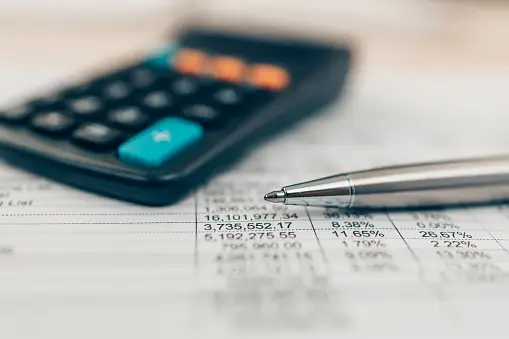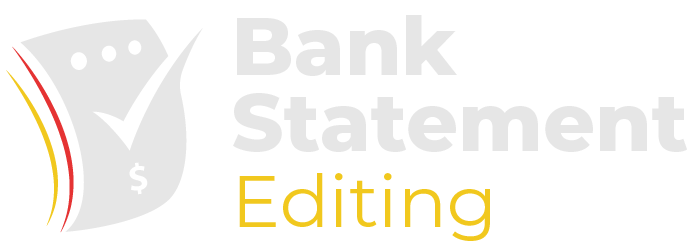Make Your Own Bank Statement: A Simple Guide to Creating Personalized Financial Records

If you’ve ever found yourself in a situation where you need a bank statement for a specific purpose but don’t want to wait for the official document from your bank, you’re in luck. Creating your own bank statement can be a useful skill, whether you’re managing personal finances or preparing documentation for various applications. In this guide, we’ll walk you through the steps to create your own bank statement that looks authentic and professional.
Creating your own bank statement might seem unconventional, but there are valid reasons why individuals consider doing it. It can be a handy solution when you need a statement quickly, for purposes like loan applications, rental agreements, or financial reviews.
2. Why Would You Need to Create Your Own Bank Statement?
People often need bank statements for various official processes. Waiting for the bank to issue one might take time, especially when urgent matters arise. Having the ability to create your own statement ensures you have control over your financial data and can expedite certain processes.
3. Gather Necessary Information and Tools
Before you start, ensure you have all your financial information at hand. You’ll need accurate transaction details, including dates, descriptions, and amounts. Additionally, have access to software or tools that can help you design a professional-looking statement.
4. Choose a Software or Tool
To create a bank statement, you can use spreadsheet software like Microsoft Excel or specialized financial software. These tools offer templates that can simplify the process, providing rows and columns to fill in your transactions.
5. Select the Statement Date and Timeframe
Choose the date for which you want to create the statement. Typically, statements cover a specific timeframe, often a month, so make sure your chosen date falls within that range.
6. Input Your Transactions
Start entering your transactions chronologically. Include details like transaction dates, payees, descriptions, and amounts. Ensure accuracy to reflect a realistic financial record.
Read it: The Consequences of Using Fake Bank Statements for Loan Applications
7. Calculate the Ending Balance
As you input your transactions, keep a running total of your balance. This balance will carry over to the next section of the statement.
8. Design and Formatting
While authenticity is key, a well-designed statement is also important. Use a clean and professional layout that mimics your bank’s style without infringing on any trademarks.
9. Add Bank’s Logo and Details
Include your bank’s logo, name, and contact information. This enhances the statement’s realism. Be cautious not to misrepresent the bank’s identity.
10. Review and Edit
Thoroughly review the statement for errors or inconsistencies. Ensure that all transactions and numbers are accurate. A well-polished statement lends credibility to your efforts.
11. Print or Generate PDF
Once you’re satisfied with the content, you can either print the statement on quality paper or generate a PDF version. Both options can produce a professional-looking document.
12. Use a Quality Paper
If you opt for printing, choose a high-quality paper that’s commonly used for official documents. The paper’s texture and weight can add to the authenticity of the statement.
13. Ensuring Authenticity
While creating your own statement is convenient, it’s important to clarify that this is for personal use only. Falsifying bank statements for any illegal or unethical activities is strictly prohibited.
Read it: Fake Bank Statement for Car Loan: A Deceptive Practice That Can Lead to Severe Consequences
14. Common Mistakes to Avoid
- Exaggerated Numbers: Keep your transactions realistic to avoid suspicion.
- Incorrect Dates: Ensure transaction dates align with the chosen statement period.
- Overlooking Details: Triple-check account numbers and descriptions.
15. Conclusion
Creating your own bank statement can be a helpful skill when used responsibly. By following the steps outlined in this guide, you can produce a customized statement that serves your immediate needs.
FAQs
- Is creating my own bank statement legal?
- Yes, creating your own statement for personal use is generally legal, but it’s crucial to use it responsibly and ethically.
- Can I use a bank statement generated this way for official purposes?
- No, these statements are intended for personal use and should not be misrepresented as official bank documents.
- Do I need advanced computer skills to create a bank statement?
- Basic computer skills are sufficient, especially if you use user-friendly software like Microsoft Excel.
- What paper should I use for printing the statement?
- Choose a quality, plain white paper that’s commonly used for official documents.
- Where can I find financial software for creating statements?
- You can find various options online, both free and paid, that offer templates for creating bank statements.
